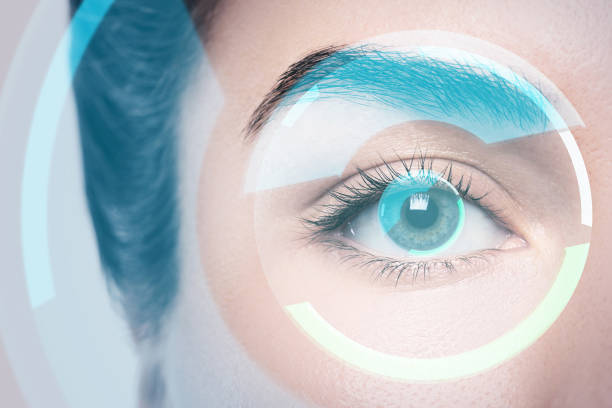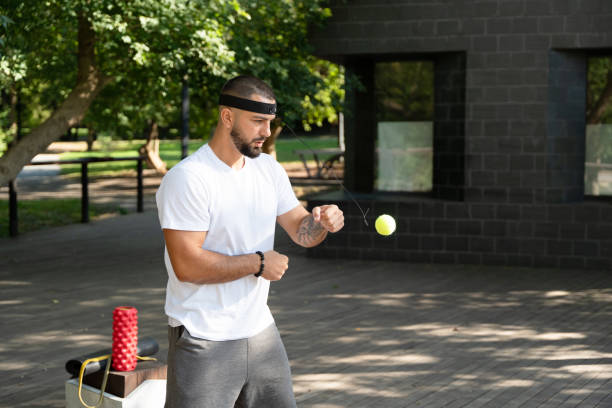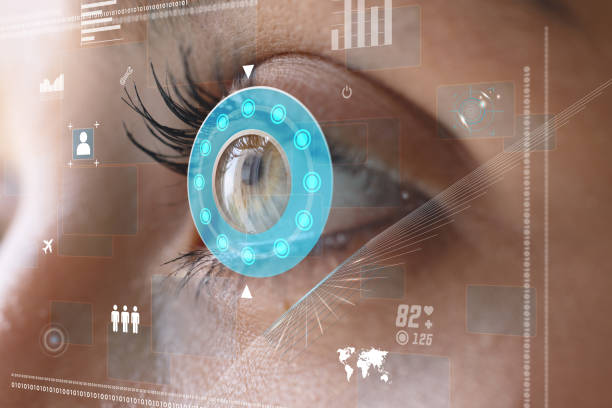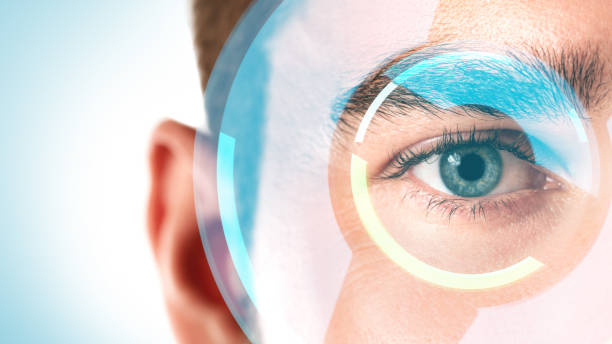Introduction
Athletes dedicate hours to improving their strength, speed, and agility, but there’s one critical skill that often gets overlooked—vision. Strong eyesight is essential for athletic success. It influences how fast an athlete can react, how accurately they can track fast-moving objects, and how well they perform in hand-eye coordination. Vision also plays a crucial role in depth perception and making quick decisions during play. Without sharp visual skills, even the most skilled athletes may struggle to reach their full potential.
This is where sports vision training comes in. This specialized training is designed to enhance visual abilities. It helps athletes track moving targets, stay focused under pressure, and react faster during games. But does it really make a difference? Can it truly improve performance in competitive sports? Let’s dive into the science behind sports vision training and explore how it could help athletes unlock their maximum potential.
What Is Sports Vision Training?
Sports vision training is a special set of exercises that helps the eyes and brain work better together. These drills focus on improving key visual skills like focus, depth perception, reaction time, and peripheral awareness. When athletes sharpen these skills, they can take in visual information faster, make quick decisions, and respond more effectively during games or matches.
What makes sports vision training different from regular eye exercises is its focus on athletic performance. These programs are often customized to match the needs of specific sports. For example, a soccer player might work on tracking fast-moving players, while a tennis player may focus on eye-hand coordination. This kind of training builds visual abilities that match the demands of each sport.
From baseball players watching for curveballs to basketball players reading the court, athletes at all levels can benefit. Sports vision training gives them the tools to perform better, react faster, and stay one step ahead of the competition.

How Vision Affects Reaction Time
Reaction time is how quickly an athlete responds to what they see. In fast-paced sports, even a split second matters. That tiny moment can decide whether a player wins or loses. A baseball player has to follow a speeding fastball. A soccer goalie must stop a surprise shot. A boxer needs to dodge a punch at the last second. The faster the brain processes visual signals, the quicker the athlete can react.
There are three main steps in reaction time:
- Visual Processing – The eyes take in visual details, like a flying ball or a sprinting opponent.
- Decision Making – The brain reads that information and quickly chooses the best action.
- Motor Response – The body responds by moving—swinging a bat, jumping to block, or shifting to avoid contact.
When athletes improve how fast and clearly they see, they can make smarter choices and move more effectively. Better vision leads to faster, more accurate reactions—giving athletes a real advantage in competition.
Key Sports Vision Training Exercises
Here are some effective exercises that help athletes sharpen their visual skills and improve reaction time:
- Dynamic Vision Drills – These exercises involve tracking a moving object, such as a ball, light, or dot on a screen. They help train the eyes to follow movement more quickly and accurately, which is important in fast-paced sports.
- Peripheral Awareness Exercises – By practicing how to detect motion or objects at the edge of vision, athletes improve their field awareness. This helps them spot teammates or opponents without turning their heads, which is key in team sports.
- Focus Flexibility – Switching focus between near and far objects builds clarity and sharpens visual speed. This is especially useful in sports like basketball, soccer, and tennis, where players must constantly adjust their focus.
- Hand-Eye Coordination Training – Drills like catching bouncing balls, hitting moving targets, or using reaction balls help link what the eyes see with how the body responds. These exercises train athletes to react faster and more accurately to sudden changes.
- Light Response Training – Using light boards or flashing devices, these drills train athletes to respond instantly to unexpected signals. This builds fast reflexes, which are crucial in sports like hockey, boxing, and racing.
- Contrast Sensitivity Training – These exercises help athletes better see objects against complex or low-light backgrounds. Improving this skill boosts performance in night games or environments with lots of visual distractions.
- Depth Perception Drills – By catching or tracking balls at varying distances, athletes learn to judge space more accurately. This helps with timing and positioning in sports like football, baseball, and volleyball.
By practicing these vision exercises regularly, athletes can gain a sharper edge in performance, reacting quicker and with more precision in every play.

Does It Really Work?
Yes—research shows that sports vision training can improve reaction time, boost accuracy, and enhance overall athletic performance. Many top athletes, including baseball players, basketball stars, and race car drivers, now use vision training to sharpen their skills and stay ahead of the competition.
While natural ability and physical strength matter, strong visual skills can take performance even further. Studies have found that athletes who follow structured sports vision programs often react faster, make better decisions, and perform with greater precision. These improvements are especially noticeable in fast-paced, high-pressure sports.
Some professional teams have even made vision training a regular part of their workouts. By helping players track fast-moving objects, read the game better, and anticipate actions more quickly, this training boosts both individual and team performance.
As more athletes and coaches see the results, sports vision training is becoming a key part of modern athletic development. It’s not just about seeing—it’s about seeing smarter and reacting faster.
How to Get Started with Sports Vision Training
If you’re an athlete aiming to improve your reaction time, boost accuracy, and take your overall performance to the next level, adding sports vision training to your routine can make a big difference. By sharpening your visual skills, you’ll be able to respond faster, make better decisions, and perform under pressure. Follow these steps to get started and unlock your full potential:
1. Assess Your Vision Skills
Start by checking your current visual strengths and weaknesses. Focus on key areas like tracking moving objects, judging depth, noticing things in your side vision, and hand-eye coordination. A simple baseline test can show where you need the most improvement. Knowing this helps you choose the right drills and create a training plan that fits your specific needs.
2. Consult a Sports Vision Specialist
For the best results, work with an eye care professional who focuses on sports vision training. These specialists understand how vision affects athletic performance and can give you expert advice. They will assess your visual strengths and challenges, then create a custom training plan just for you. This personalized program targets the visual skills that matter most for your sport, helping you improve faster and perform at your best.
3. Integrate Vision Drills into Your Training Routine
Make vision training a regular part of your workout plan. Just like you train for strength, speed, or endurance, your eyes and brain need practice too. Set aside time each week to focus on vision drills. These exercises should be treated with the same importance as physical conditioning. By making them a consistent part of your routine, you’ll build sharper visual skills that boost your overall performance.
4. Utilize Cutting-Edge Technology
Boost your vision training by using the latest tools and tech. Vision training apps, strobe glasses, reaction lights, and virtual reality systems can make your workouts more effective and engaging. These tools are designed to challenge your eyes and brain in new ways while simulating real-game situations. By adding advanced technology to your routine, you can improve focus, reaction time, and decision-making—key skills for top athletic performance.
5. Track and Measure Progress
Keep a close eye on how your skills are improving over time. Regularly track your reaction time, accuracy, and decision-making to see if your training is paying off. By measuring your progress, you can confirm that your workouts are working and make any necessary changes. This ongoing feedback helps you stay on track and ensures that you’re continuously improving.

Final Thoughts
Sports vision training is an effective tool for athletes who want to boost their reaction time, improve accuracy, and elevate their overall performance. Just as athletes train their bodies for strength, speed, and endurance, training their eyes can give them a critical edge. By sharpening focus, depth perception, and hand-eye coordination, athletes can react more quickly, make smarter decisions, and perform confidently under pressure.
Whether you’re an amateur athlete looking to enhance your skills or a professional aiming to gain every possible advantage, adding vision training to your routine can take your performance to the next level. With consistent practice, improved visual skills can be the key to going from good to great—helping you stay one step ahead of the competition.

